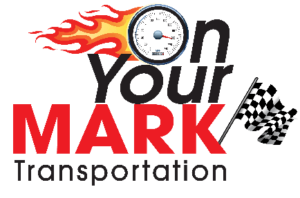As you read this article, you do so knowing that yesterday you did not have to deal with a Fire, Tornado, Disgruntled Employee, or other disaster that easily could have turned your business upside down today. However, by preparing today, although it will not keep a business disaster from happening, it may at least lessen the damages and further mistakes that could make the crisis worse.
Safety and Security Assessment programs are so important to businesses to perform that the Federal Government requires them for most grant applications. In the upcoming round of Security Grants, the Federal Government will want to know that any business making application that the business has created, or has updated their assessment. Many businesses believe that a Security Assessment is just looking about the property and deciding where to place security cameras, or if to put an electronic gate on the fence surrounding the property. A proper Safety and Security Assessment is much more detailed, and down the road, may be vital for proper crisis management as well.
True, one good starting step is to take a moment and look at building security systems. When were cameras updated, repaired, and missing areas of the property updated with additional cameras? Are the systems using good backup recording devices? More than just building and property security, numerous security systems have been used to help find missing persons, or in providing vital clues in other crimes, bringing criminals to justice. In addition, if one of your employees are hurt in a crime that occurs, the question will arise of what you did, or should have done to protect your employees. There is the expectation that your business is a safe place to work. If any outsider can walk onto your property from any direction, the disaster that could occur goes well beyond unwanted graffiti or items stolen from vehicles. Most companies today are providing some type of airport transportation service as part of their overall business plan. When was the last time your drivers were trained in looking for suspicious packages being place in wheel wells of vehicles that could create a disaster at any of our nation’s airports? Terrorists don’t just attack the big cities on the coast, and more and more concern is on the interior cities. Annual trainings on proper searching of vehicles, along with a proper pre-trip is important for the safety and security of your business, your employees, and the communities you serve.
A good Safety and Security Assessment also includes an up to date building draft like the one attached. The building drawing shows more than just exits from the building. It shows where fire extinguishers are, where possible chemicals are stored, and what type they are. Fire and Police agencies need this information, along with whether or not fuel is stored inside and where electrical panels are located. Any pits that could be open in maintenance facilities or where gas lines to heating systems are running are important to identify as well.
Often we hear of workplace violence occurring somewhere in the country, and we think to ourselves how thankful we are that it didn’t happen in our facility. However, are we prepared for if it did? A Safety and Security Assessment will never stop an incident of a disgruntled employee, or a spouse/ex-friend of one of our employees, unless we identity and acknowledge we cannot see the future. Does your business have open access to the office area for anyone to just walk in, or do they have to be allowed in through a security system? If a disgruntled person enters, and begins to use a gun, is there an alert system with a code so all employees are aware of what may be taking place in another part of the building? The chances are so minor of this happening, we as business owners don’t take the time to discuss this openly. However, many police agencies have a community outreach that will provide that information for the business and the employees. This training also needs to take place on an annual basis.
Do you remember all of the Tornado and Fire Drills from our school days? How many school fires have you heard about, or how many schools have had a direct hit by a tornado? Yet, these drills in most schools happen almost twice per year. As a business owner, you owe it to your employees to discuss where to go if a fire were to occur, so that everyone can be accounted for. Often, in panic, people go back into a building because they forgot something they felt was important. If everyone meets at a specific location, and are counted, the team will keep someone from re-entering a building. There is a restaurant in Tuscaloosa, Alabama that took a direct hit when the tornado hit that community in 2011. Luckily, the employees knew to go to the freezer in the middle of the building. There are pictures hanging on their wall showing them emerging right after the storm, dazed, confused, but all were alive and well. The building around them was gone, but the freezer unit withstood the direct hit. Do your employees know where to go? If you think something like this can’t happen to your organization, look up pictures of the Tuscaloosa, Alabama tornado, and the total destruction of that community, or of Joplin, Missouri.
One of the businesses I was a consultant for told me of a story of an employee who had his hand pinched in a press in the back of a factory. By the time word got to the front office to call for an ambulance, the receptionist was told the employee had been crushed in the press. She was so panicked at the thought of what happened, she could not remember that the number to call for an emergency was to dial 9-1-1 for emergency. In an onsite Security Assessment for another client, I was informed by the local fire department, that the fastest way to reach any of the local emergency personnel was NOT to call 9-1-1, as they area used a metropolitan-wide 9-1-1 dispatch system, and often there were mistakes made in dispatching. Their recommendation to my client was to dial direct to their local community system and let them know what the emergency was so that fire, emergency, or police could be dispatched correctly.
As part of a Safety and Security Assessment, time needs to be taken to discuss what happens after the crisis. If something happened to your business yesterday, would you be open today? Are your computer files backed up off site so everyone’s information can be back online today? Do your employees take notes of important client information and put them into their computer where it all can be backed up, or are their desks filled with “sticky notes” to remind them to call a client, or an important meeting coming up? I had a client who had what their company called the “Bible” where all booking information was kept. I asked what would happen had there been a fire the previous night, and the employees and ownership were uncomfortable in answering that they would be in trouble.
Does your organization have a clearly understood crisis plan should an accident or other issue put the spotlight of the media on your company? Do the employee’s know who is the person who speaks with the media, and who the backup person is, should the “media contact” is not available? It is easy to think as a business owner that employees know the procedure, but remember back when President Regan was shot, and his Secretary of State, Al Haig, stated that he was in charge? Even in the Federal Government, with all of the planning they do, at that moment in time, one of the biggest PR Blunders occurred, and is still spoken about in classes today. It is easy to think everyone knows what to do or say in a crisis, but unless it is talked about, often, people and how they react in panic situations are never known.
All of these can easily be written up in a well formatted Safety and Security Assessment Plan, followed up with training for all employees. It can then be provided to local law enforcement and emergency personnel. The important part is to take the time needed to create the plan. Although it can be done with company personnel, some companies find that it is easier and much faster to just bring in a consultant who can pull the information together in previously created templates, write the training, meet with local officials and finally provide the training in a timely basis for company personnel. The important aspect is to get it done today, while you are reading this article. Nothing happened yesterday, but we cannot see tomorrow.


